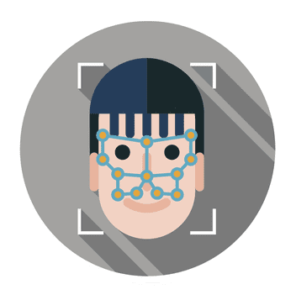 The past year has been a busy one for NEC, thanks in large part to its sophisticated facial recognition technology. It has seen growing interest in the law enforcement community, where NEC has established relationships with huge partners such as INTERPOL; and it has also seen more commercial applications such as deployments at a Korean tourist destination and at a global sporting event. Meanwhile, a growing appetite for biometric border screening, particularly on the part of America’s Customs and Border Protection agency, has considerably expanded the use of NEC technology at airports for biometric border screening.
The past year has been a busy one for NEC, thanks in large part to its sophisticated facial recognition technology. It has seen growing interest in the law enforcement community, where NEC has established relationships with huge partners such as INTERPOL; and it has also seen more commercial applications such as deployments at a Korean tourist destination and at a global sporting event. Meanwhile, a growing appetite for biometric border screening, particularly on the part of America’s Customs and Border Protection agency, has considerably expanded the use of NEC technology at airports for biometric border screening.
Raffie Beroukhim, Senior Vice President – Advanced Recognition Systems Division at NEC Corporation of America, highlights the latter development in particular at the start of his Year in Review interview with FindBiometrics, and proceeds to outline some of the key trends he has seen in the industry, as well as what he anticipates for the year ahead.
FindBiometrics: What are the biggest highlights for your organization from the past year?
Raffie Beroukhim, Senior Vice President – Advanced Recognition Systems Division at NEC Corporation of America (NECAM): NEC’s biggest highlight was the expansion of face recognition (FR) in the federal government space, including the highly successful pilots testing NEC’s commercial-off-the-shelf (COTS) NeoFace Express device and cloud-based NeoFace matching as key facial recognition components of a frictionless biometric exit process within the Department of Homeland Security’s Customs and Border Protection. The NeoFace solution is currently deployed at several major airports, including ATL, IAD, IAH, JFK, LAS and ORD and has garnered national press. A second narrative we saw in 2017 was the expansion of FR in critical infrastructure, or large public spaces, such as theme parks and stadiums to eliminate long queues and improve customer experiences by quickly verifying identities and authenticating memberships prior to admittance, while improving safety and security for all. Lastly, we’ve seen continued expansion of FR in the public safety and law enforcement markets, where departments, such as Arizona Department of Transportation and Irving Police Department, are using our high-performance FR solutions for time-saving identity recognition, investigations and intelligence analysis.
FindBiometrics: What, in your opinion, was the defining trend for the biometrics industry as a whole in 2017?
NECAM: The defining trend in 2017 had to be the expansion of face recognition into the mainstream due to two major news events. The first major event was the publication of Executive Order 13769 on Protecting the Nation from Foreign Terrorist Entry in the United States. Sec. 7 of that document directs the Department of Homeland Security to expedite completion of the Biometric Entry-Exit Tracking System. This executive order served as a catalyst to propel CBP to deploy NEC’s Advanced Recognition Systems FR security technology at several major airports to create a frictionless, convenient safety screening experience for the select international traveler. NEC was featured prominently in several national news stories. The second major event was Apple’s incorporation of facial recognition as a defining feature in the iPhone X. This is a victory for the identity industry that further lends credibility to a technology that has seen significant advances and maturity in recent years.
FindBiometrics: What excites you most about the year to come in biometrics?
NECAM: Face is the future. We believe 2018 will see a continuation of the expansion we saw in 2017 on both the federal and critical infrastructure fronts. The potential for FR to revolutionize and streamline security screenings and generally encourage a safer environment in public spaces has excited federal officials at numerous departments. Within the federal market, we see the federal government heading toward mass adoption at multiple levels. From the CBP Biometric Exit pilots to the U.S. Immigration and Customs Enforcement’s use of handheld fingerprint scanners and beyond, we haven’t seen the last of biometrics being deployed in our daily lives. Likewise, the travel and entertainment sectors hold similar promise for FR tech in 2018. From stadiums to cruise lines to theme parks, we see numerous companies seeking to enhance their customer’s experience while increasing security and streamlining operational efficiencies. NEC sees a similar world where travelers and passengers move seamlessly through transportation spaces such as airports. Their data are collected without contact so moving individuals do not need to stop to present fingerprints or a secure tokens such as a passport, border card, or driver’s license.
*
Stay posted to FindBiometrics in the coming weeks to see more year-end reflections and predictions from the biggest names in biometrics.
The 15th Annual FindBiometrics Year in Review is brought to you by Leidos.








Follow Us